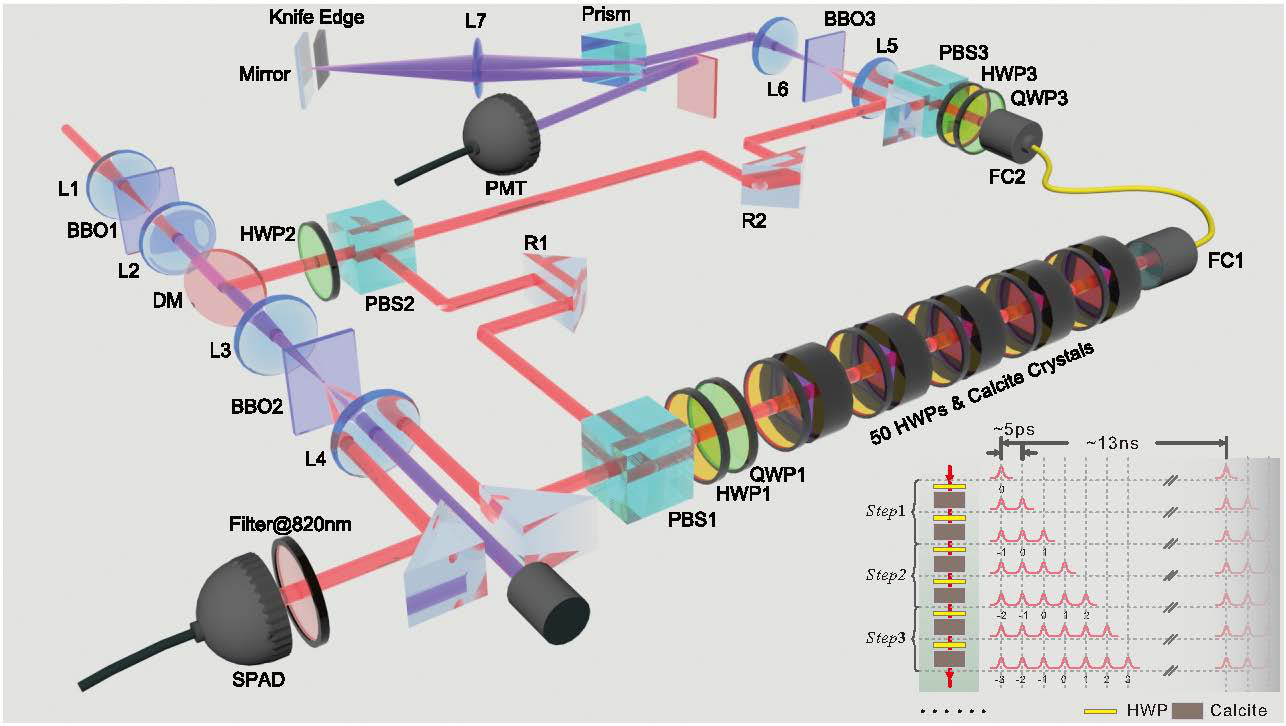Scientists from Key Laboratory of Quantum Information have directly measured the winding number in a quantum walk with chiral symmetry for the first time by a large-scale quantum-walk platform up to 50 steps based on the time multiplexing protocol. It is a collaborative work by Prof. LI chuanfeng, Prof. HAN Yongjian and Dr. XU Xiaoye’s teams, and the result is published online in Physical Review Letterson June 27.
Quantum walks, extended from the classical random walks theory, have always been useful models in quantum information, even universal quantum computation can be built up based on it. Although well understood in theory, its experimental implementations, no matter in what physical systems, always face challenges both in scale and in complexity.
Photons can walk in time line between beams or in orbital angular momentum, while the improvement of scale, especially with genuine single photons, keeps challenging scientists. The group led by Prof. Li found a novel way to improve the scale of the walk. They implemented 'spin-orbit' coupling by using the birefringent crystals cut collinearly. Their scheme avoided the intrinsic loss in traditional time multiplexing protocols. For the collinear structure of the interferometer, the system is ultra-stable even with genuine single photons as the walker. The group demonstrated a 50-step Hadamard quantum walk of herald single photons within a high fidelity.

Experimental setup.(Image by XU Xiaoye)
Theoretical proceedings make the complete topological classifications of quantum walks clear, however, former methods are indirect, based on the bulk-edge corresponding. Challenges lie in the requirement of the full knowledge of the system’s ground wave function. Luckily the group developed a method to measure and reconstructed the final wave function, hence directly reading out the bulk topological invariants, i.e., winding numbers, in a quantum walk with chiral symmetry.
The results provide an intuitive perspective for understanding the topology in periodically driven quantum systems. The novel platform provides a significant tool for investigating the topology. The scheme for implementing large scale quantum walks can be further developed to quantum information.
The research is supported by Chinese Academy of Sciences, Ministry of Science and Technology, National Natural Science Foundation, Ministry of Education and China Postdoctoral Science Foundation.
(School of Physical Sciences, Edited by GUO Jianjian, USTC News Center)
Contact:
FAN Qiong
Tel: +86-63607280
E-mail:englishnews@ustc.edu.cn